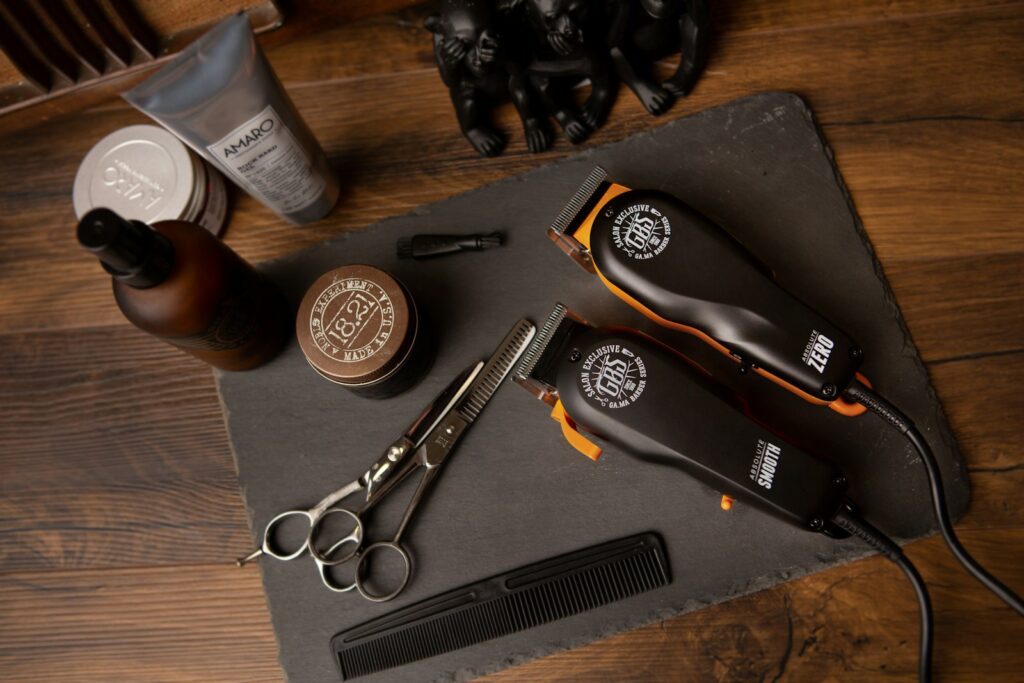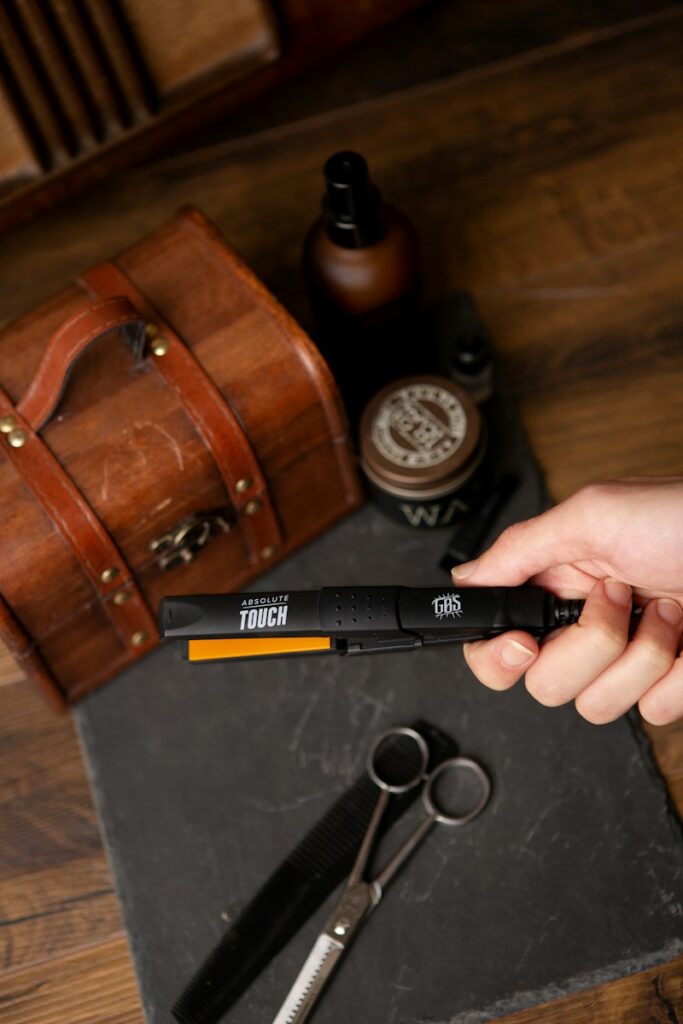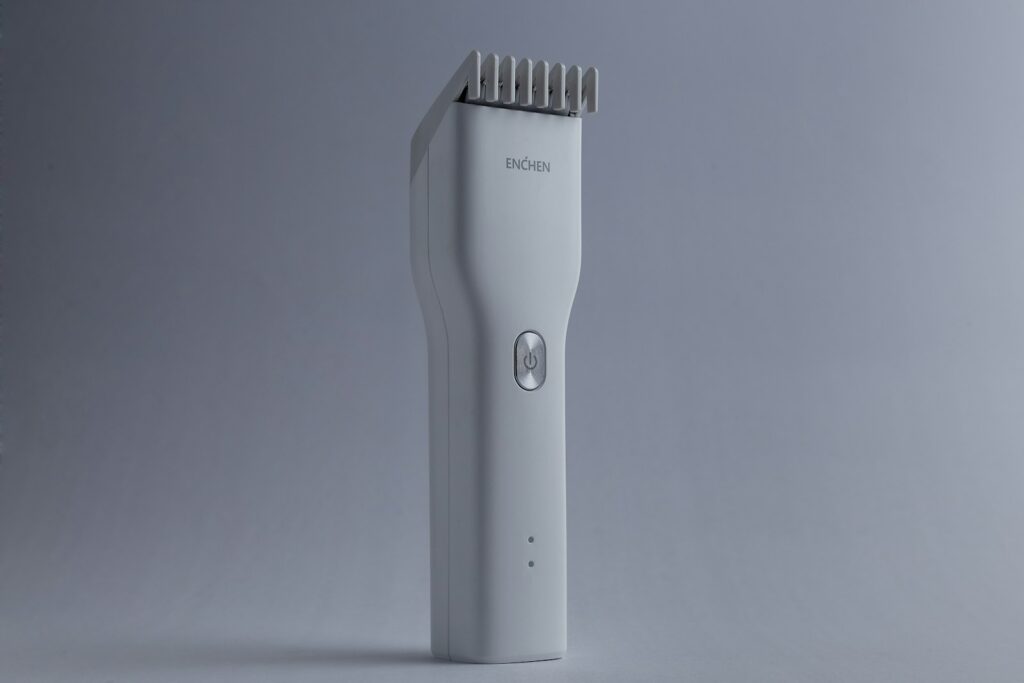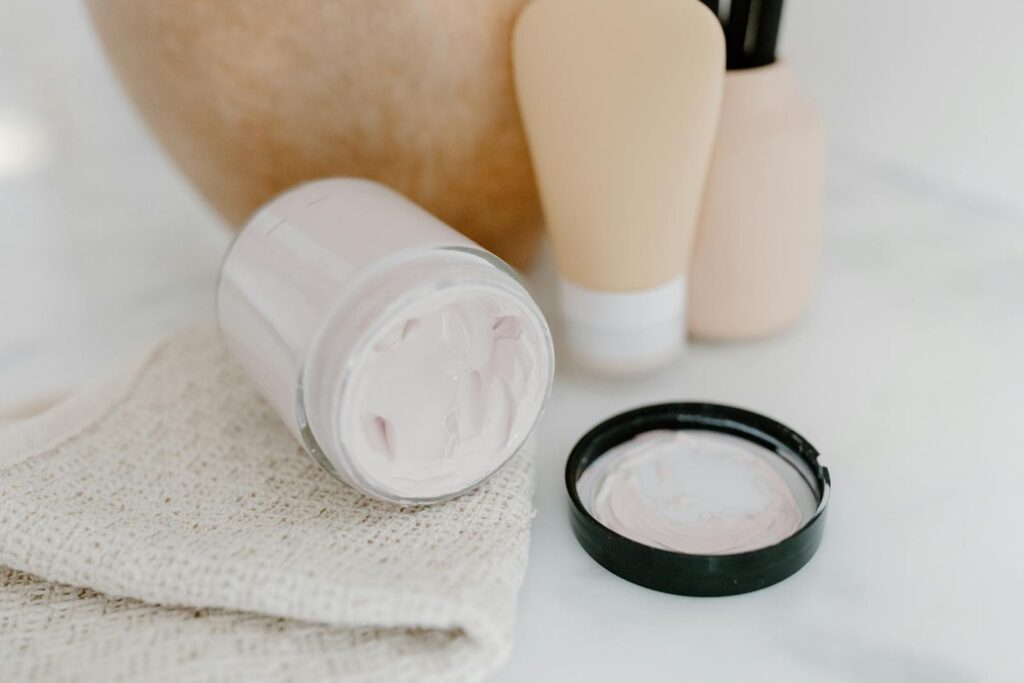Becoming proficient in beard growth is a process combining patience, grooming, and understanding genetics. Starting with a clean face and using tools like derma rollers can stimulate follicle development. Regular trimming and nourishing with oils help maintain a neat appearance. Recognizing growth cycles and managing patchiness are essential steps. Consistent care and realistic expectations pave the way for a confident beard. But what role do genetics and age really play in this pursuit?
Key Takeaways
- Begin with a freshly shaved face and use quality shaving products for an even growth foundation.
- Apply beard oil daily to hydrate and reduce itchiness while promoting healthy growth.
- Trim regularly to maintain a neat appearance, focusing on neckline and cheek lines.
- Understand your beard growth cycle and set realistic expectations based on genetics and age.
- Use a beard comb to train follicles and distribute natural oils for even growth.
Laying the Groundwork for Healthy Beard Growth
Before commencing on the voyage of beard growth, it’s vital to lay a solid foundation for healthy development. Starting with a freshly shaved face, using quality shaving products, guarantees an even base. Keeping the facial skin in the best condition is indispensable, utilizing regular moisturizing to reduce irritation. Consistent use of a derma roller promotes new collagen production and enhances the skin’s appearance, contributing to a healthier beard. As patience becomes a virtue, one should focus on grooming rather than seeking length. Gently snipping stray hairs around the mouth with trimming scissors maintains a neat appearance. Consistent washing and applying beard oil nourish and moisturize facial hair, while combing helps train follicles and distribute oils effectively. This groundwork supports a thriving beard.
With a solid foundation in place, the expedition into the early stages of beard development begins. In this phase, patience and care are paramount as stubble starts to make its appearance.
Regular cleansing and moisturizing keep the skin healthy, minimizing irritation. Gentle grooming with a beard comb helps train follicles while distributing natural oils, promoting uniform growth.
Snipping stray hairs around the mouth maintains neatness without compromising length. It’s important to remember that the average beard growth rate is half an inch per month, highlighting the need for patience and consistency. Understanding these initial patterns allows one to guide others in their beard odyssey, ensuring a supportive and nurturing environment.
Cultivating these habits lays the groundwork for a fuller, healthier beard ahead.
Overcoming the Dreaded Beard Itch
Dealing with the dreaded beard itch is a common hurdle for many on their beard-growing quest, but it doesn’t have to derail progress. Managing itchiness effectively can keep the voyage smooth and comfortable.
A few simple strategies can make a world of difference:
- Use Beard Oil: Applying beard oil hydrates both the hair and skin, reducing irritation and softening sharp hair ends.
- Wash Regularly: Clean the beard with warm water to remove dirt and prevent dryness.
- Moisturize Skin: Keep the underlying skin moisturized to maintain healthy beard growth.
Understanding Patchiness and Growth Patterns
Understanding the patchiness and growth patterns of a beard can be essential for anyone beginning their beard-growing expedition.
Each person’s beard grows uniquely due to genetic and hormonal influences. Patchiness, often more noticeable to the wearer, is a common experience. It arises from factors like genetics, nutrition, and stress.
Embracing these peculiarities helps in setting realistic expectations. Recognizing various growth patterns allows for better care, ensuring the beard grows healthily.
Grooming Tips for the First Month
Acknowledging patchiness is part of the beard-growing expedition, but the first month also demands attention to grooming practices. During this time, individuals should focus on nurturing their budding beards to support healthy growth.
Here are some key grooming tips:
- Moisturize regularly: Applying beard oil helps reduce itchiness and keeps the skin underneath hydrated.
- Maintain cleanliness: Wash the beard with a gentle cleanser to remove dirt and excess oil, promoting a healthy environment for growth.
- Train the beard: Use a comb or brush to guide the hair’s direction, ensuring even growth and distribution of natural oils.
Maintaining Style and Shape as Your Beard Grows
As a beard begins to take shape, maintaining its style and form becomes vital to guarantee it reflects personal grooming standards. Regular trimming is essential for keeping a beard neat, focusing on areas like the neckline and cheek lines.
Using quality grooming tools, such as a beard comb or brush, helps in detangling and evenly distributing oils. Applying beard balm provides control and enhances the beard’s natural shape.
Consistent conditioning maintains softness, while avoiding excessive heat prevents dryness. By prioritizing these maintenance steps, one ensures their beard not only serves as a personal statement but also meets professional standards.
Exploring the Beard Growth Cycle
After achieving a well-maintained style, it’s important to understand the phases that govern beard growth. The beard growth cycle contains three distinct phases: anagen, catagen, and telogen. Each phase plays a pivotal role in determining the speed and fullness of a beard.
- Anagen Phase: This active growth phase lasts 2-6 years, marked by rapid cell division.
- Catagen Phase: A short 2-3 week transitional phase where growth halts.
- Telogen Phase: Lasting 2-4 months, old hairs shed while new ones begin to grow.
Understanding these phases helps individuals manage expectations and tailor grooming routines effectively.
Genetic and Age-Related Factors in Beard Growth
Genetic and age-related factors play a crucial role in determining beard growth. A man’s genetic lineage largely dictates how full and healthy his beard will be, often mirroring traits from his father or grandfather. Age also impacts growth; facial hair typically starts around age 13, peaks between 25-35, then gradually slows.
| Factor | Description | Impact on Beard Growth |
|---|---|---|
| Genetics | Inherited traits from family | Determines fullness and health |
| Age | Growth rate changes over time | Peaks in early adulthood |
| Ethnicity | Genetic diversity across populations | Influences thickness and growth speed |
Understanding these factors aids in managing expectations and supporting others on their beard voyage.
The Role of Hormones and Nutrition in Beard Health
While genetics and age set the foundation for beard growth, hormones and nutrition considerably influence the health and appearance of facial hair. Testosterone and dihydrotestosterone (DHT) play crucial roles in beard density and thickness.
A well-balanced diet provides essential nutrients that strengthen beard growth, ensuring facial hair remains strong and lively. Key nutritional components include:
- Proteins and vitamins: Support hair strength and growth.
- Zinc and iron: Promote cellular repair and vitality.
- Vitamins B, C, and D: Enhance follicle health and improve beard texture.
Understanding these factors enables individuals to nurture their beards, serving as a testament to self-care and dedication.
External Factors Impacting Beard Development
Several external factors can markedly impact beard development, affecting both the speed and quality of growth. Stress plays a significant role; it can weaken immunity, slowing hair growth.
Smoking also negatively impacts beard health by reducing blood flow and nutrient delivery to hair follicles.
Adequate sleep is vital, as it improves circulation and supplies essential nutrients to the beard area.
Climate and pollution can affect skin and hair quality, making proper skincare essential.
Additionally, racial differences can influence growth patterns, with some ethnicities experiencing thicker or thinner hair.
Final Thoughts
Expertise in beard growth is a path that blends patience, care, and an understanding of one’s unique biology. By maintaining a clean and moisturized face, utilizing tools like derma rollers, and regularly trimming and conditioning with oils or balms, individuals can encourage healthy growth. Recognizing genetic, hormonal, and nutritional influences, along with managing challenges like patchiness and itchiness, is key. With consistent grooming and realistic expectations, achieving a full, confident beard becomes an attainable goal for many.
